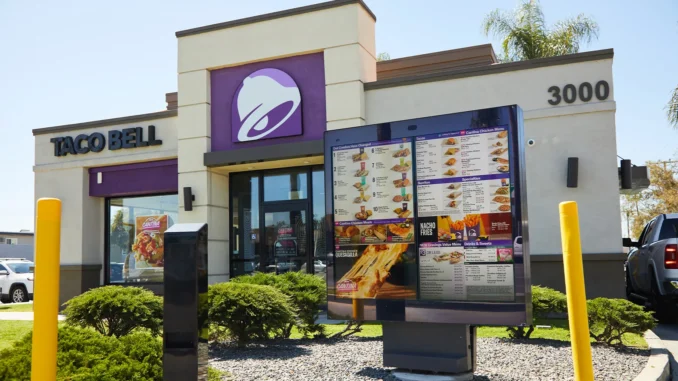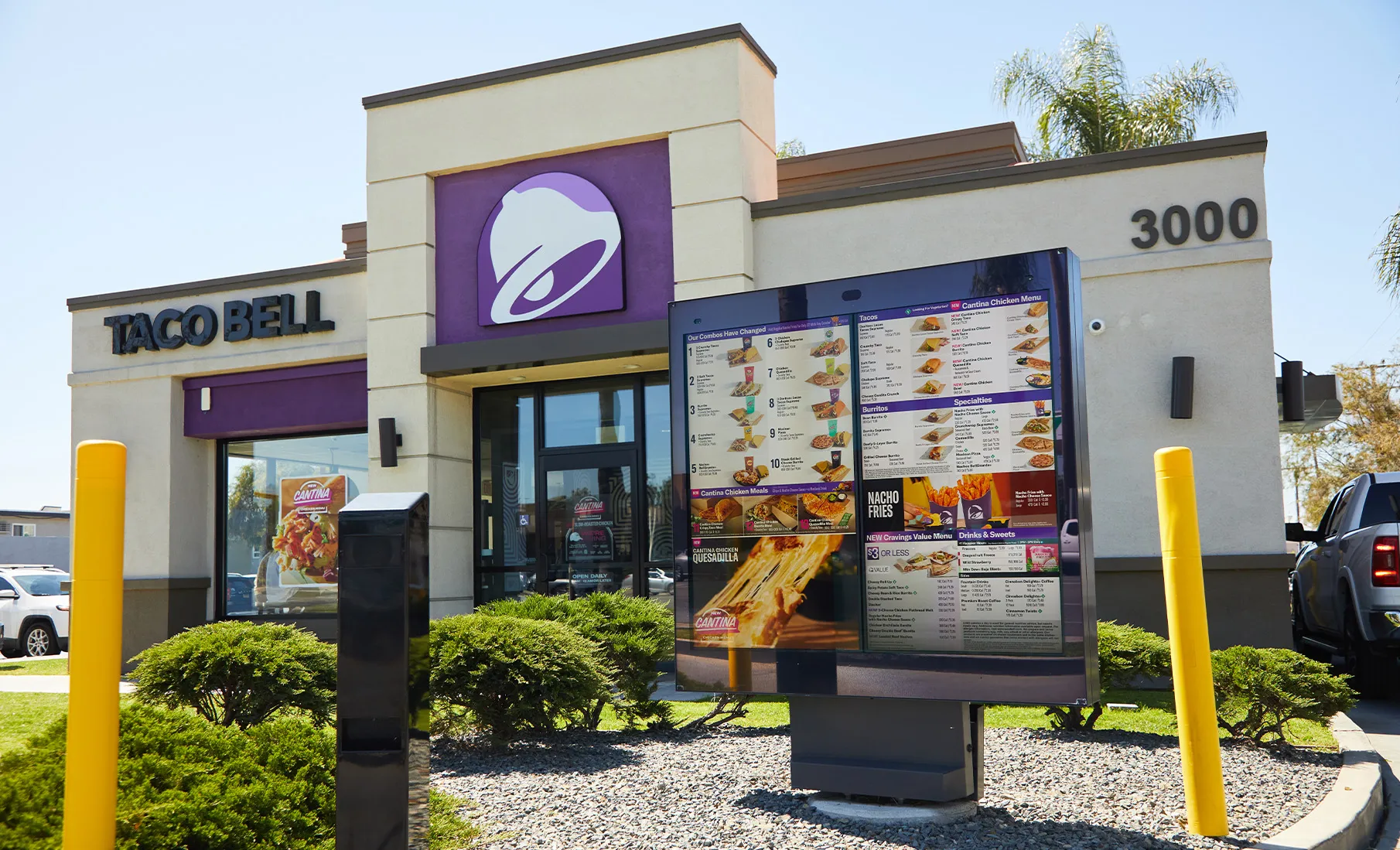
By Lea Mira, RTN editor – 8.8.2024
Taco Bell, the Mexican-inspired American fast-food chain, is taking a technological leap by introducing artificial intelligence (AI) drive-thrus in hundreds of its U.S. stores. The move, described as the company’s biggest change yet, follows a trial run in 100 stores across 13 states. The fast-food chain’s ultimate goal is to implement this technology in all of its restaurants, signaling a strong belief in AI’s potential to revolutionize the customer experience.
According to a press release from the company, the introduction of voice AI technology is designed to “improve back-of-house operations for team members and enhance the ordering experience for customers. Benefits include reducing the burden on team members, improving order accuracy, a consistent, friendly experience and reducing wait times, while driving profitable growth for Taco Bell, Yum! Brands and their franchisees.”
This initiative follows McDonald’s highly publicized and ultimately unsuccessful foray into AI drive-thrus. The fast-food giant ended its partnership with IBM earlier this year following numerous customer complaints and viral social media posts highlighting the system’s shortcomings, including incorrect orders and unusual food combinations.
Despite the challenges at McDonald’s, Taco Bell remains confident in its AI-powered drive-thru system. Yum! Brands, Taco Bell’s parent company, claims that its system, which has been tested and refined for over two years, has shown improved order accuracy, higher employee satisfaction and shorter wait times. However, the company has yet to release any concrete data to back up these claims.
“Innovation is in our DNA at Taco Bell, and we view Voice AI as a means to improve the team member and customer experience,” said Dane Mathews, chief digital and technology officer at Taco Bell, in a press release. “By leveraging AI, we can reduce the workload of our team members so they can focus on providing hospitality in service, and it allows us to find new and meaningful ways to connect with our customers.”
In addition to expanding Voice AI technology in Taco Bell drive-ins in the US, five KFC restaurants in Australia are simultaneously testing Voice AI technology in their drive-ins. While Yum! Brands did not disclose its technology partners for the venture, it emphasized that the system would be able to understand the different pronunciations of menu items – a direct response to previous criticism of similar technologies.
Additionally, the company assures that human employees will remain an integral part of the drive-thru experience and will be on hand to help if the AI has difficulty understanding an order. Addressing concerns that AI could replace human jobs, Lawrence Kim, chief innovation officer at Yum! Brands, explained that the technology is intended to “enhance the experience of team members” by allowing them to focus on other tasks rather than eliminating their roles.
Taco Bell is not alone in its pursuit of AI integration in the fast-food industry. Chipotle, Wingstop and Panera are among the numerous chains experimenting with AI applications. Del Taco, in particular, canceled its AI voicebot test earlier this year after encountering difficulties.
Last month, Bojangles, the popular Southern-cuisine fast-food chain, announced it was expanding its use of drive-thru voice AI technology. The move follows a successful pilot program at about 50 Bojangles restaurants and will include both company-owned and franchise locations, ultimately reaching hundreds of restaurants. The voice AI, known as “Bo-Linda” at Bojangles, is designed to optimize the drive-thru experience by automating order taking. The technology is said to have a 95% accuracy rate, comparable to human employees, and is designed to reduce work pressure on staff so they can focus on food quality, order accuracy and customer retention.
Taco Bell’s launch of AI drive-ins comes amid growing skepticism about the rapid integration of AI into various sectors. Labor advocates have raised concerns about potential job losses, and even industry leaders acknowledge the need for careful implementation. Despite these concerns, Yum! Brands remains true to its AI-first mentality, and AI already plays a role in its restaurant management super app. The company is also testing AI technology in five KFC stores in Australia, demonstrating its full commitment to exploring the potential of AI across its entire portfolio of brands.
Taco Bell’s strategic use of technology has contributed greatly to its brand awareness and marketing impact in recent years. Its digital channel experienced a growth rate of nearly 35 percent last year, thanks in part to the use of in-store kiosks. These digital touchpoints have streamlined the ordering process. Thousands of its restaurants have also adopted “suggested ordering,” an advanced system that predicts and suggests optimal quantities for each product, allowing restaurant managers to make informed inventory decisions.
The brand has also pushed ahead with the rollout of Yum!’s next-generation Cloud First POS system – a technological innovation that increases operational efficiency and gives employees more freedom of action. This system was implemented in around 5,000 units last year. Also boosting operational efficiency is Taco Bell’s Touch Kitchen Display System (Touch KDS), a technology that streamlines order prioritization and improves accuracy. The technology has been rolled out in most of the company’s restaurants.
According to the company, the AI technology leverages Taco Bell’s “strong drive-thru customer experience ecosystem powered by digital menu boards, Yum! Brands’ proprietary Poseidon POS system, and the next generation of the Taco Bell Rewards loyalty program,” which the brand will reportedly integrate later this year. Taco Bell’s innovativeness is also evident in other technology-enabled concepts. For example, the Go Mobile restaurant model, first introduced in 2021, foregoes indoor dining areas to alleviate bottlenecks in the drive-thru. This concept includes a dedicated parking area for mobile and delivery orders, an outdoor pickup window, and takeout shelves.
Whether Taco Bell’s AI drive-thrus will succeed where McDonald’s failed remains to be seen, but the company’s investment in this technology underscores the growing influence of AI in shaping the future of the fast-food industry and the customer experience.

